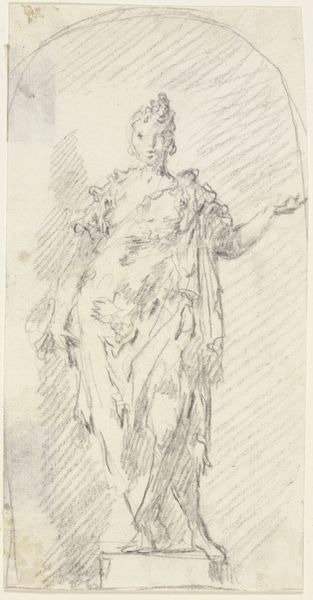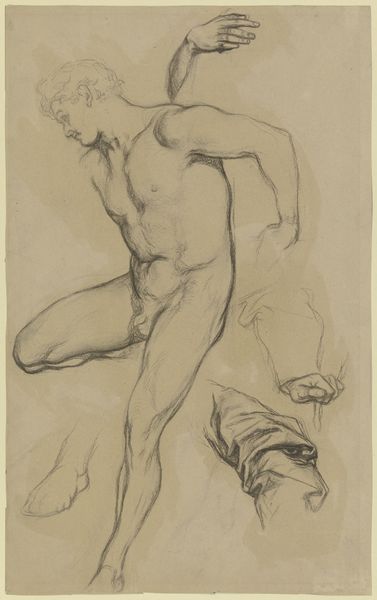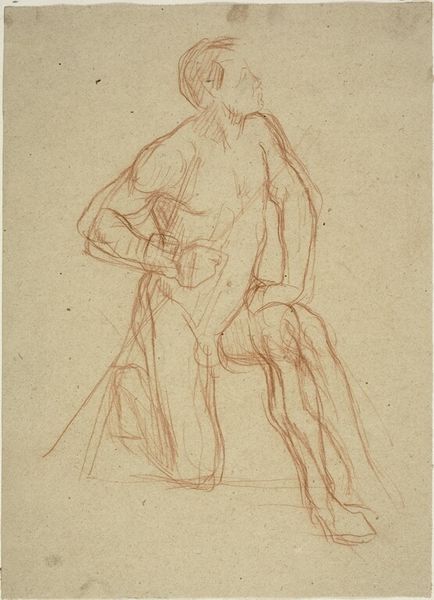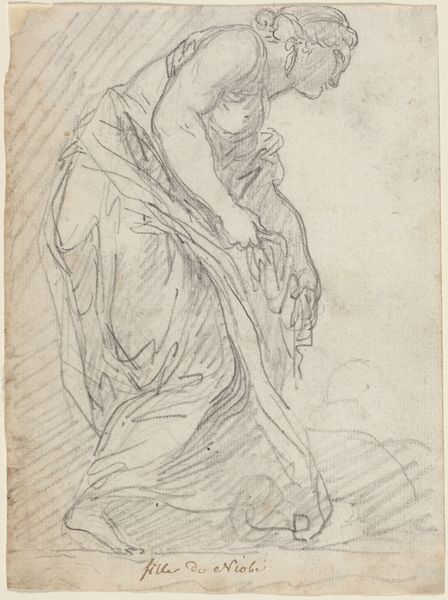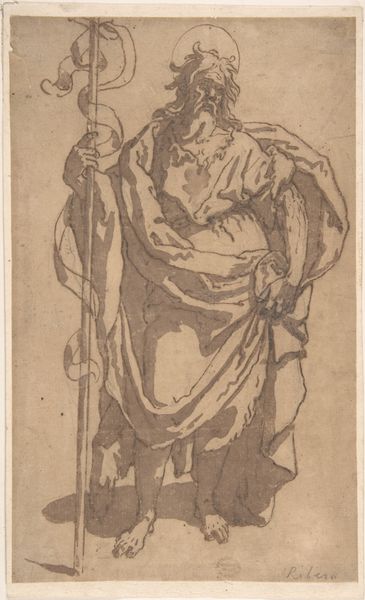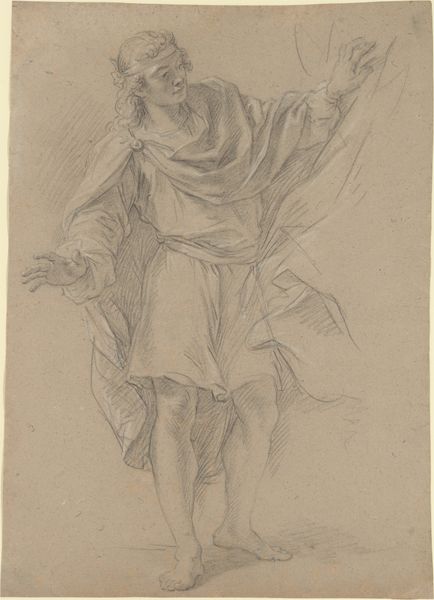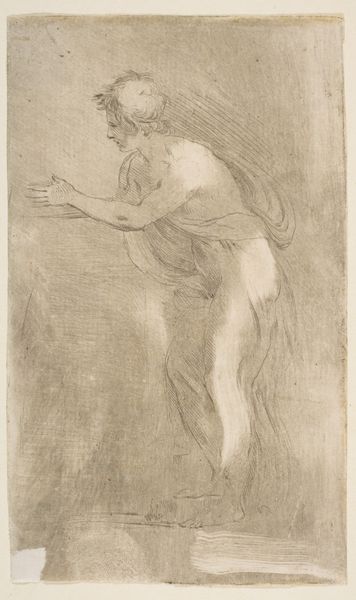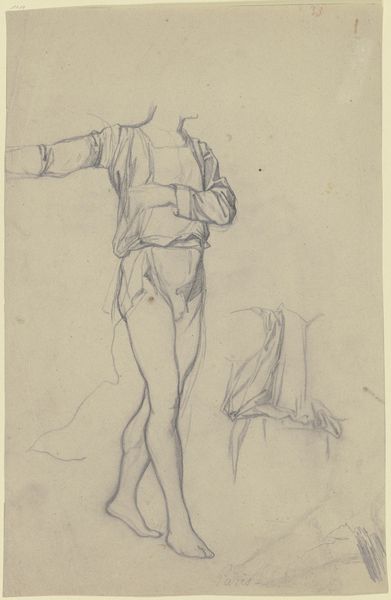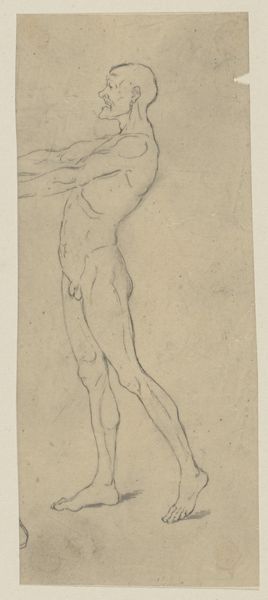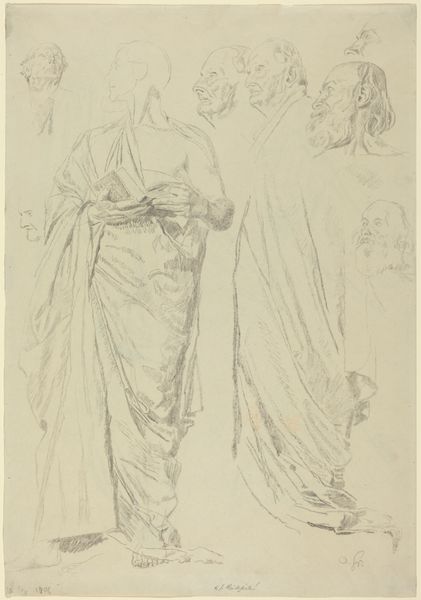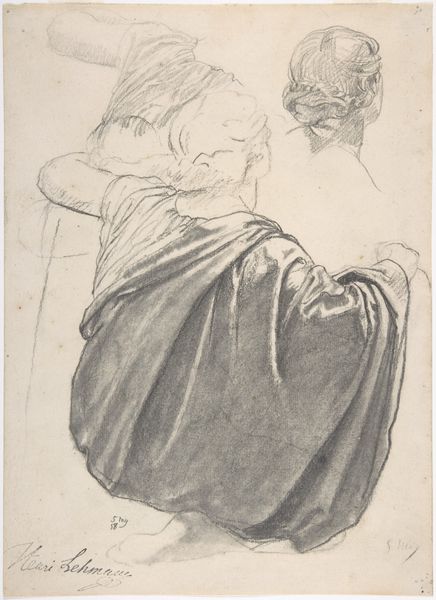
drawing, paper, chalk
#
portrait
#
drawing
#
baroque
#
paper
#
chalk
Copyright: Public Domain
Curator: Welcome. Before us hangs "Saint Bartholomew," a drawing by Pierre Le Gros the Younger, currently held at the Städel Museum. Le Gros rendered the piece with chalk on paper. Editor: There's a haunting, almost pained quality to it, isn't there? The subject’s stance, the way the drapery clings and pools around him—it’s all very deliberate. The chiaroscuro adds an unmistakable air of drama, even if it's understated. Curator: The rawness you pick up on ties directly to Bartholomew's story. Tradition holds that he was martyred by being flayed alive, hence his frequent depiction holding his own skin. This drawing, a study perhaps, prepares us for the gruesome realities of religious persecution. Think about the socio-political conditions that created and revered such imagery. Editor: Right, I understand the historical weight of the subject. But purely from a formal perspective, look at how Le Gros used line weight to convey depth and texture, especially in the drapery and the suggestion of musculature. The interplay of light and shadow accentuates Bartholomew's form, guiding the eye and enhancing the emotional impact you’ve noted. Curator: I appreciate your sharp reading of the artistic strategy and your careful examination of detail. The work invites conversation about power, the representation of violence, and the agency—or lack thereof—attributed to figures within religious narratives. How might early audiences, or we today, understand Bartholomew's suffering within complex power dynamics? Editor: We’re not merely observers. As viewers we engage in an ongoing construction of meaning that unfolds in light of our different approaches. It is exciting when we are led to examine what lies just outside our expertise. Curator: Yes, looking more carefully and asking challenging questions ensures a richer appreciation of historical context. Editor: Indeed.
Comments
No comments
Be the first to comment and join the conversation on the ultimate creative platform.
